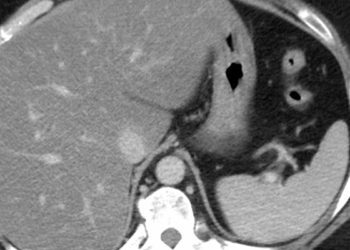Reduction of key risk factors could prevent 37 million deaths by 2025
Image PD
1. If target levels for 6 key risk factors (salt intake, tobacco, alcohol, obesity, high blood pressure and glucose) of prominent non-communicable diseases (NCDs) are attained by 2025, 37 million deaths could be delayed or prevented. 31 million of these deaths would be prevented in low-to-middle income countries.
2. A more ambitious target for reducing tobacco use will have the greatest impact on achieving target levels in NCD mortality reduction.
Evidence Rating Level: 2 (Good)
Study Rundown: The United Nations agreed to reduce premature mortality from four key NCDs –chronic respiratory diseases, diabetes, cancers, and cardiovascular diseases–by 25% by 2025. If targets for the 6 risk factors are achieved, probability of mortality from these four NCDs is estimated to decrease by 19% in women and 22% in men. Current trends estimate a decrease in mortality of 10% in women and 11% in men. Importantly, premature NCD mortality would be reduced by 24% in men and 20% in women if a 50% reduction in smoking prevalence is adhered to rather than the current 39% target. The cost of inaction toward these goals would widen inequities in health, as 9.5 of the 10.5 million preventable deaths would occur in low-to-middle income countries should the current trends continue. Although data from some countries was limited, this study was strengthened by the large epidemiologic studies on which its analyses were based.
The study was funded by the UK MRC.
Click to read the study, published today in The Lancet
Relevant Reading: Priority actions for the non-communicable disease crisis
In-Depth: This study assessed the potential impact of reducing 6 preventable risk factors –salt intake, tobacco and alcohol use, obesity, raised blood pressure and glucose – on the prevalence of mortality from four main non-communicable diseases (NCDs) by 2025. Risk factor and mortality trends were drawn from systematic analyses from high-income, as well as low-income and middle-income countries (LMICs). These projections were compared to trends in death rates predicted by WHO Global Health Estimates to assess the difference between taking additional actions against these risk factors and allowing the current trends to persist.
By 2025, reduction of these risk factors to their respective target levels could result in the delay or prevention of 37 million deaths from the four principal NCDs. A more ambitious reduction in tobacco use, along with reductions in the other risk factor targets, could prevent or delay nearly 43 million deaths attributable to the four NCDs. LMICs would reap the greatest benefit in the reduction of risk factors, as high-income countries were on track to meeting the 2025 NCD goals with minimal change in practices. LMICs would experience the most notable change in the prevalence of mortality from NCDs, with the prevention or delay of 31 million of the 37 million preventable deaths occurring in LMICs.
More from this author: Recurrent violence in post-conflict communities linked to increased mental disorders,Financial incentives improve Hep B vaccination rate among injection drug users, Minimal association between economic growth and childhood undernutrition for world’s poorest, Nationwide treatment regimen more than halves tuberculosis prevalence in China, Estimated three quarters of people with influenza are asymptomatic [Flu Watch study]
©2012-2014 2minutemedicine.com. All rights reserved. No works may be reproduced without expressed written consent from 2minutemedicine.com. Disclaimer: We present factual information directly from peer reviewed medical journals. No post should be construed as medical advice and is not intended as such by the authors, editors, staff or by 2minutemedicine.com. PLEASE SEE A HEALTHCARE PROVIDER IN YOUR AREA IF YOU SEEK MEDICAL ADVICE OF ANY SORT.







